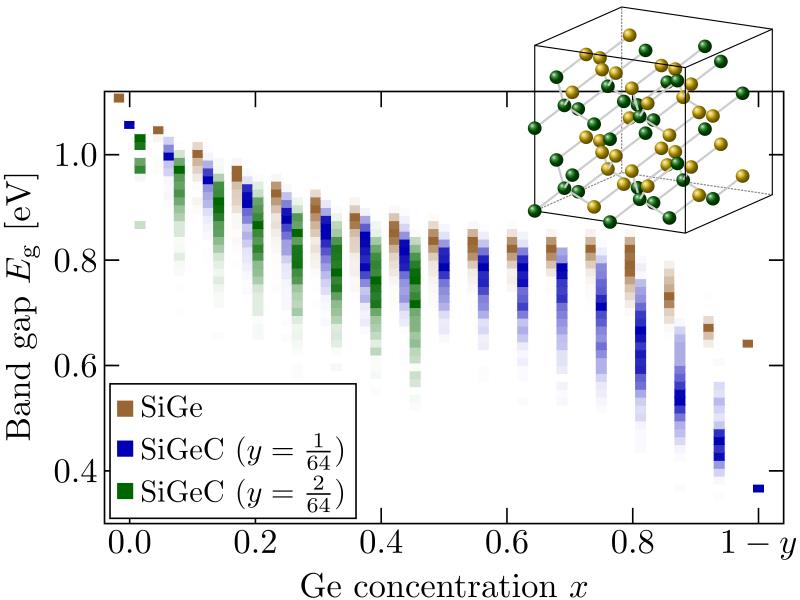Statistical Studies on Random Configurations of Silicon Germanium Carbon Alloys Using Density Functional Theory
29.Jan.2025 Reseach News

SiGeC, a random alloy, is studied by means of density functional theory for different Si:Ge ratios across the whole composition range and small C concentrations of 1.6 and 3.2% in Si-rich alloys. The random occupation of lattice sites in SiGeC results in statistical variations of material properties, which we investigate using ≈20,000 random configurations. This is an alternative approach to methods such as the virtual crystal approximation or the special quasi-random structure method because the presented approach allows access to statistical fluctuations. These fluctuations can be seen in the formation energy of the SiGe alloy, and the fluctuations increase with increasing C content. In addition, we can associate those fluctuations to structural features. Stability analysis based on the Gibbs energy shows that an elevated temperature is required to stabilize the random alloy via entropic contributions. The solubility of C is rather small (<1% at room temperature, up to 1.5% at 500 K), depends on the Ge content, and increases with rising temperature. We also study the band gap considering methodological as well as structural implications: Their quantitative values are strongly affected by finite-size effects due to periodic boundary conditions in the simulation, leading to larger band gap variations than potentially observable. Despite this issue, we can conclude qualitative trends such as rising band gap variations with increasing C content.
For more details please read our original paper online.
